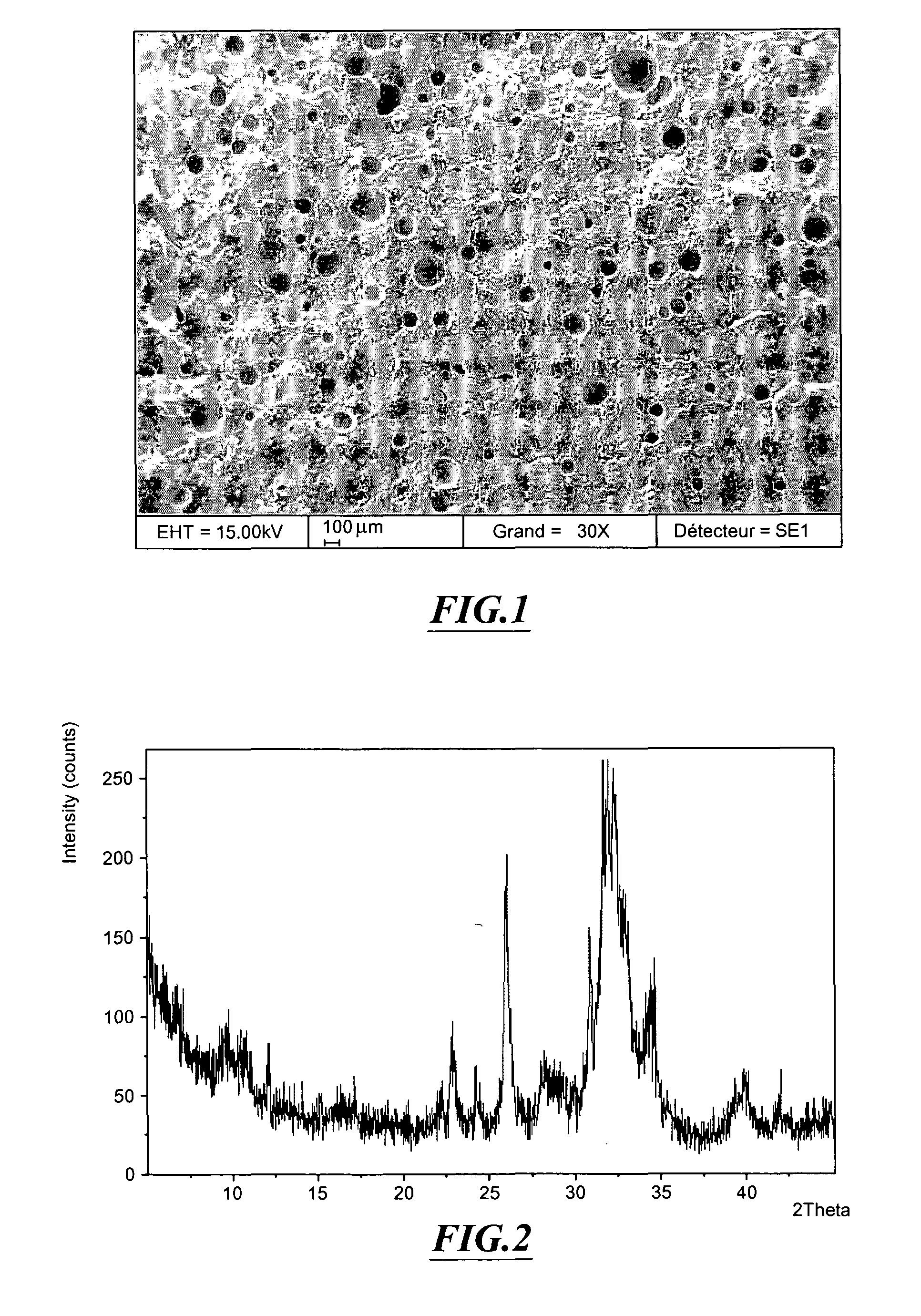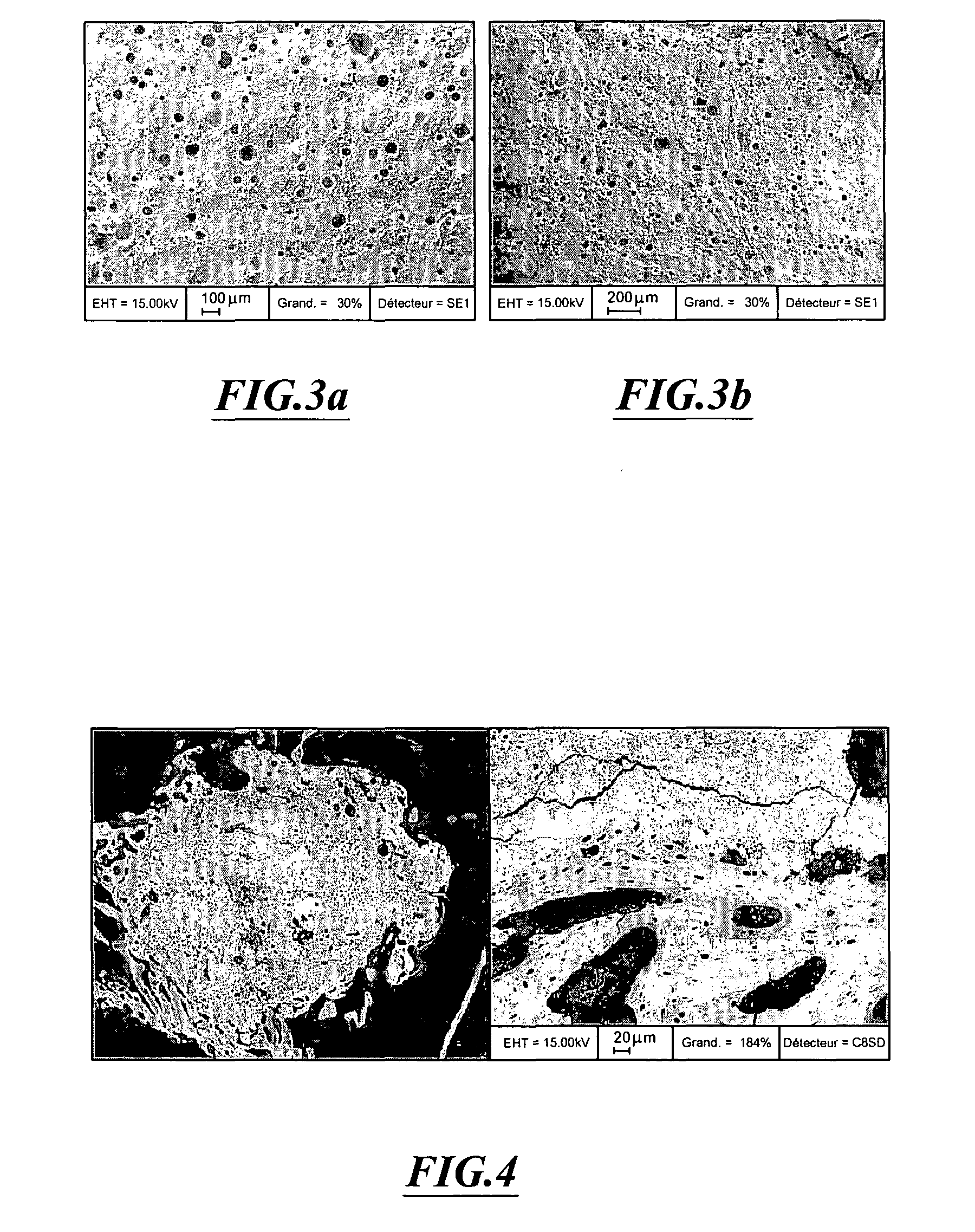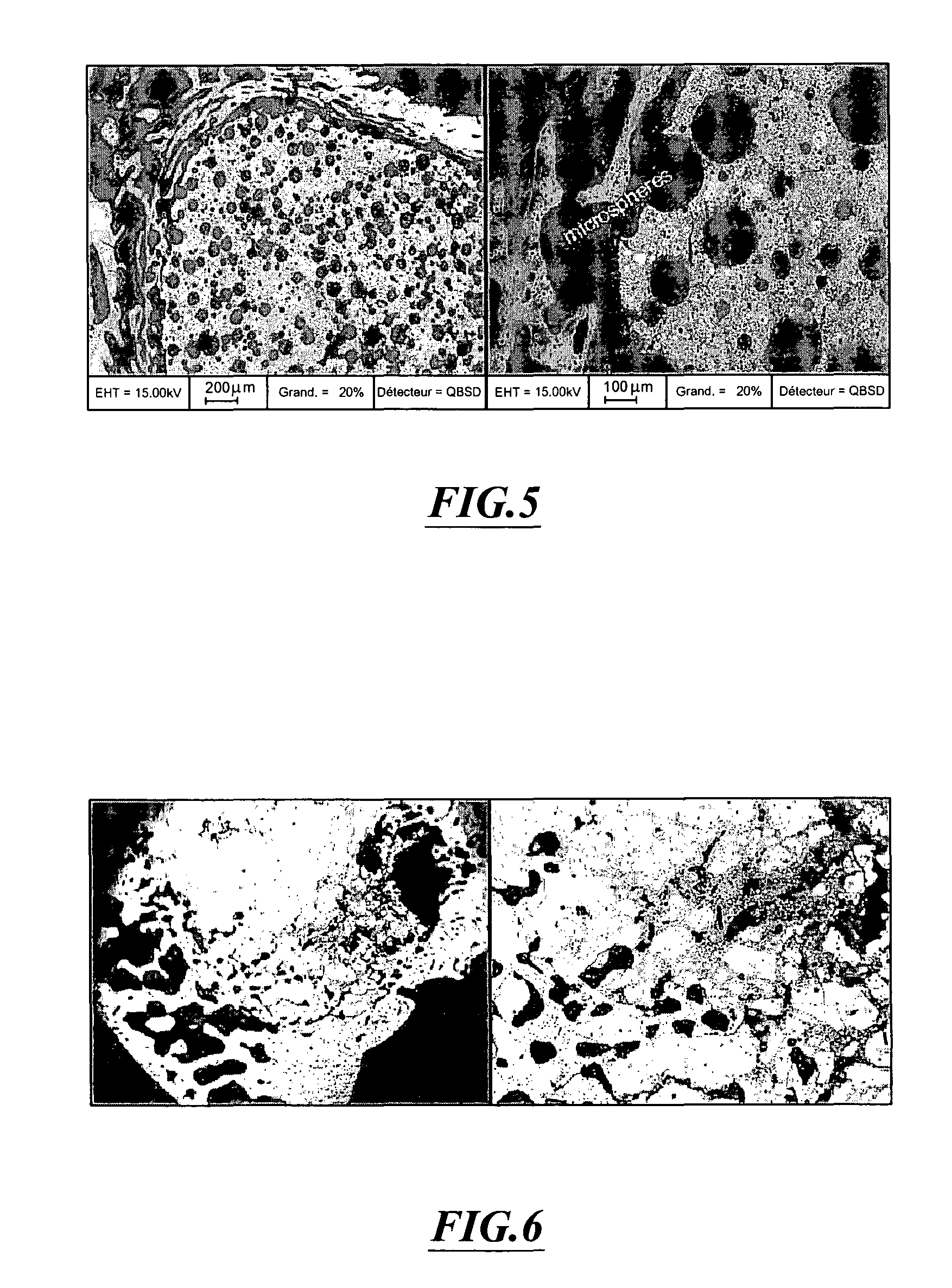Macroporous and highly resorbable apatitic calcium-phosphate cement
- Summary
- Abstract
- Description
- Claims
- Application Information
AI Technical Summary
Benefits of technology
Problems solved by technology
Method used
Image
Examples
example 1
Preparation of poly(ε-caprolactone) Microspheres
[0087]1 g of poly(ε-caprolactone) (Tone® P787, Union Carbide SA, France) has been dissolved in 15 mL of Recaptur dichloromethane (Prolabo, France). This solution has been emulsified in an aqueous solution (1 L) of methylcellulose (Méthocel® A15LV premium EP, Colorcon, France) (0.75 g) at 4° C., under constant shaking (550 rpm), for 90 min. The resulting emulsion is then added to 1 litre of distilled water. The resulting suspension is then filtered in vacuum. The microspheres are then washed with 1 litre of distilled water and dried at room temperature for 24 h.
example 2
Preparation of poly(ε-caprolactone) Microcapsules Encapsulating Water
[0088]The same process as Example 1 is used to produce microcapsules of poly(ε-caprolactone) encapsulating water except for adding of water in the polymer before the emulsion.
example 3
Preparation and Characterization of Apatitic Calcium Phosphate Cements According to the Invention
[0089]the inorganic component consists of α-TCP.
[0090]The organic component consists of microspheres or microcapsules of poly(ε-caprolactone) encapsulating water.
[0091]An aqueous solution of Na2HPO4 (3%) is used as liquid phase.
[0092]Different cements with different liquid / powder ratios (L / P) have been prepared (0.32 mL.g−1−1) and different percentages of microparticles of poly(ε-caprolactone) from 0 to 10%.
[0093]The inorganic and organic components are mixed with the liquid phase and the mixing is placed in a cylinder-shaped mould. After 15 min, the mould is placed is a 0.9% NaCl solution at 37° C. These conditions simulate the in vivo conditions. The saline solution is changed every three days. The incubation time is one week or one month.
[0094]After the incubation period, the cylinders are taken out of moulds and assayed.
[0095]Table 1 summarizes the different conditions.
TABLE 1L / Pα-TC...
PUM
| Property | Measurement | Unit |
|---|---|---|
| diameter | aaaaa | aaaaa |
| diameter | aaaaa | aaaaa |
| compressive strength | aaaaa | aaaaa |
Abstract
Description
Claims
Application Information
 Login to View More
Login to View More - R&D
- Intellectual Property
- Life Sciences
- Materials
- Tech Scout
- Unparalleled Data Quality
- Higher Quality Content
- 60% Fewer Hallucinations
Browse by: Latest US Patents, China's latest patents, Technical Efficacy Thesaurus, Application Domain, Technology Topic, Popular Technical Reports.
© 2025 PatSnap. All rights reserved.Legal|Privacy policy|Modern Slavery Act Transparency Statement|Sitemap|About US| Contact US: help@patsnap.com



